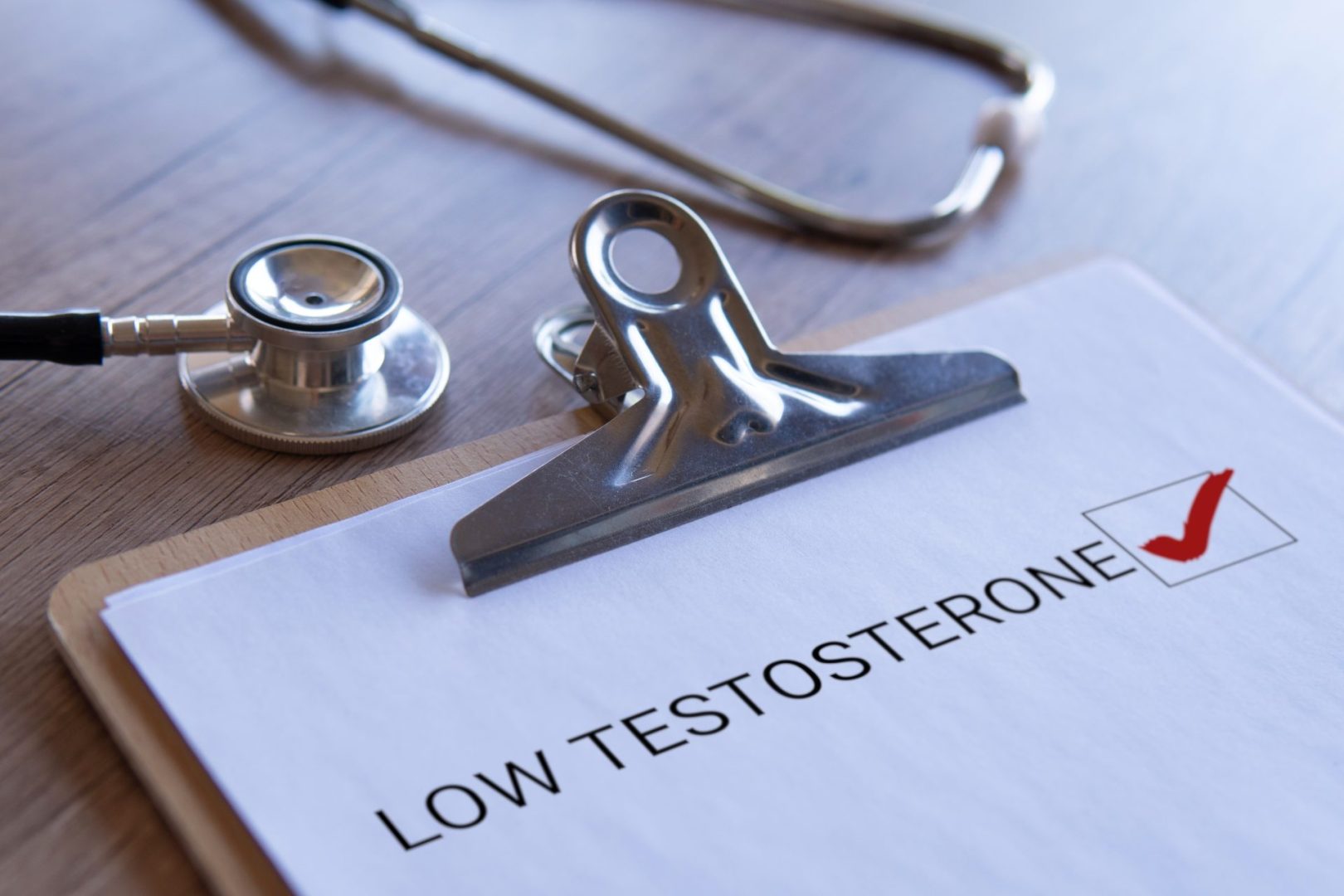Testosterone plays a crucial role in male health, influencing everything from muscle development and energy levels to mood regulation and sexual function. Despite its importance, testosterone levels have declined significantly across populations in recent decades. Understanding how to naturally support and optimize your testosterone production can dramatically improve physical performance, mental well-being, and overall quality of life.
The foundations of testosterone production
Testosterone, primarily produced in the testes with smaller amounts from the adrenal glands, functions as the principal male sex hormone. This vital hormone influences numerous bodily systems beyond just reproductive function.
During puberty, testosterone drives the development of male secondary sexual characteristics including increased muscle mass, deeper voice, body hair growth, and genital development. In adulthood, it continues to regulate muscle maintenance, bone density, fat distribution, red blood cell production, and cognitive function.
The body produces testosterone through a complex hormonal cascade beginning in the hypothalamus, continuing through the pituitary gland, and ultimately signaling the testes to produce testosterone. This system, called the hypothalamic-pituitary-gonadal axis, operates on feedback loops that can be influenced by numerous lifestyle and environmental factors.
Testosterone production naturally follows daily rhythmic patterns, with levels typically highest in the morning and gradually declining throughout the day. This natural rhythm makes morning the optimal time for blood testing to assess baseline levels. Weekly and seasonal variations also occur, with some research suggesting slightly higher levels during spring and summer months.
Understanding these natural patterns helps contextualize the strategies for optimizing testosterone production through targeted lifestyle interventions that support the body’s natural hormonal processes.
Prioritize comprehensive strength training
Among all lifestyle interventions for boosting testosterone, consistent strength training stands as perhaps the most powerful and well-documented approach.
Compound exercises that engage multiple large muscle groups simultaneously produce the most significant hormonal response. Squats, deadlifts, bench presses, rows, and overhead presses should form the foundation of a testosterone-boosting training program. These movements stimulate larger hormonal responses than isolation exercises like bicep curls or lateral raises.
Training intensity plays a crucial role in testosterone production. Research consistently shows that moderate to heavy loads (around 70-85% of one-rep maximum) with moderate rep ranges (6-12 repetitions) optimize the testosterone response. This intensity creates sufficient mechanical tension and metabolic stress to trigger hormonal adaptations.
Workout volume and frequency require careful consideration for hormonal optimization. While some training stimulus is necessary, excessive volume can elevate cortisol levels and potentially suppress testosterone. Most research suggests that 3-4 strength training sessions weekly, lasting 45-60 minutes each, provides optimal hormonal benefits while allowing sufficient recovery.
Recovery periods between workouts prove equally important for testosterone optimization. Insufficient recovery leads to elevated cortisol levels and suppressed testosterone production. Programs should incorporate both adequate sleep and at least 48 hours between training sessions for the same muscle groups.
Consistency in training delivers far greater hormonal benefits than sporadic intense workouts. The body responds to regular training stimulus by adapting hormonal systems over time. Even during periods when intense training isn’t possible, maintaining some resistance training prevents significant hormonal decline.
Optimize your body composition
Body fat percentage significantly impacts testosterone levels through multiple mechanisms, making body composition optimization crucial for hormonal health.
Excess body fat, particularly visceral fat around the abdomen, actively converts testosterone to estrogen through aromatase enzyme activity. This conversion effectively reduces free testosterone levels while simultaneously increasing estrogen, creating a doubly negative hormonal shift for men.
Insulin resistance, commonly associated with higher body fat percentages, correlates strongly with reduced testosterone production. The relationship appears bidirectional – insulin resistance reduces testosterone, while lower testosterone promotes insulin resistance, potentially creating a negative feedback loop.
The ideal body fat percentage for testosterone optimization falls between 10-15% for most men. Below 8-10%, some men may experience negative hormonal effects from the physiological stress of maintaining extremely low body fat, while levels above 18-20% typically correlate with declining testosterone.
Achieving optimal body composition requires a comprehensive approach rather than crash dieting. Rapid weight loss through severe caloric restriction can temporarily reduce testosterone levels due to the physiological stress response. A moderate caloric deficit of 300-500 calories daily, combined with sufficient protein intake and strength training, provides the most hormone-friendly approach to fat loss.
Body composition improvements deliver particularly dramatic testosterone benefits for men currently in the overweight or obese categories. Studies consistently show that overweight men who reduce their body fat percentage often experience significant natural increases in testosterone levels.
Master your nutritional approach
Dietary choices significantly influence testosterone production through multiple pathways involving both macronutrient balance and micronutrient availability.
Total caloric intake directly impacts hormonal production, with even short-term caloric restriction potentially lowering testosterone levels. Chronic undereating particularly affects testosterone through reduced leptin levels, signaling energy insufficiency to the reproductive system. Conversely, significant caloric excess leads to fat gain, negatively affecting testosterone through mechanisms previously discussed.
Optimal macronutrient distribution for testosterone support typically includes moderate to higher protein intake (1.6-2.2g per kg of bodyweight daily), sufficient fat (25-35% of calories), and carbohydrates adjusted based on activity levels. This balance provides the building blocks for hormone production while supporting training performance and recovery.
Dietary fat intake particularly influences testosterone production, as cholesterol serves as a precursor molecule for all steroid hormones. Research indicates that extremely low-fat diets (below 20% of calories) can reduce testosterone levels. Monounsaturated fats (from olive oil, avocados, and nuts) and saturated fats in moderate amounts appear particularly supportive of testosterone production.
Micronutrients play crucial roles in testosterone synthesis, with several vitamins and minerals serving as required cofactors in the production pathway. Zinc deficiency particularly impacts testosterone, as this mineral directly influences testosterone synthesis in the testes. Rich sources include oysters, beef, pumpkin seeds, and crab.
Vitamin D functions more like a hormone than a typical vitamin and directly influences testosterone production. Regular sun exposure provides the most natural source, while fatty fish, egg yolks, and fortified foods offer dietary options. Supplementation may prove necessary for those with limited sun exposure or during winter months.
Magnesium supports testosterone production through multiple mechanisms, including reducing sex hormone binding globulin (SHBG) levels, potentially increasing free testosterone availability. Leafy greens, nuts, seeds, and whole grains provide excellent dietary sources.
Prioritize sleep quality and quantity
Sleep quality and duration dramatically influence testosterone production, with sleep deprivation rapidly reducing levels through multiple mechanisms.
Testosterone production peaks during REM sleep cycles, with the majority of daily testosterone release occurring during deep sleep phases. Interruption of these sleep cycles, whether from sleep apnea, insomnia, or external disruptions, directly impairs testosterone synthesis.
Research demonstrates that even short-term sleep restriction significantly reduces testosterone levels. One notable study found that sleeping only 5 hours nightly for one week reduced daytime testosterone levels by 10-15% in healthy young men – equivalent to aging 10-15 years hormonally.
Sleep duration requirements for optimal testosterone appear to center around 7-9 hours for most men. The exact optimal duration varies individually, but consistent sleep less than 6 hours associates with significantly reduced testosterone levels in multiple studies.
Sleep quality matters alongside quantity, with fragmented sleep showing similar negative hormonal effects as reduced total sleep. Addressing sleep apnea, a condition causing repeated breathing interruptions throughout the night, proves particularly important, as this condition strongly correlates with reduced testosterone levels.
Pre-sleep routines significantly impact sleep quality and subsequent testosterone production. Reducing blue light exposure from screens 1-2 hours before bed, maintaining consistent sleep-wake schedules, keeping bedrooms cool (65-68°F), and minimizing alcohol and caffeine in the evening all support optimal sleep quality for hormonal health.
Manage stress effectively
Chronic stress directly suppresses testosterone production through multiple physiological pathways, making stress management essential for hormonal optimization.
The stress hormone cortisol and testosterone exhibit an inverse relationship, with elevated cortisol levels actively suppressing testosterone production. This relationship evolved as a survival mechanism – during periods of stress or danger, reproduction becomes less important than immediate survival functions.
Modern chronic stress differs significantly from the acute stressors our hormonal systems evolved to handle. While short-term stress followed by recovery doesn’t significantly impact long-term testosterone levels, the unrelenting nature of modern psychological stress creates sustained hormonal suppression.
The most effective stress management techniques combine physical approaches with mental techniques. Regular exercise helps regulate stress hormones, while practices like meditation, deep breathing, and mindfulness reduce psychological stress that would otherwise suppress testosterone.
Social connection provides another powerful buffer against the testosterone-lowering effects of stress. Strong social relationships and regular positive social interaction correlate with higher testosterone levels compared to isolation or conflict-filled relationships.
Time in nature, often called “forest bathing” or nature therapy, demonstrates measurable stress-reducing effects. Even brief exposure to natural environments reduces cortisol levels and may support healthier testosterone production compared to remaining exclusively in artificial environments.
Limit alcohol consumption
Alcohol consumption significantly impacts testosterone through multiple mechanisms, with both acute and chronic effects on hormone production.
Even moderate alcohol consumption temporarily reduces testosterone production, with research showing up to 20% decreases following several drinks. This acute effect typically normalizes within 24 hours after alcohol clearance from the system.
Chronic heavy alcohol consumption causes more concerning long-term suppression of testosterone production. Regular drinking damages the testes’ ability to produce testosterone while simultaneously increasing aromatase activity that converts testosterone to estrogen.
Alcohol disrupts sleep architecture even when consumed several hours before bedtime. While alcohol may initially cause drowsiness, it significantly reduces REM sleep and deep sleep phases where most testosterone production occurs, creating a secondary negative impact on hormonal production.
For those seeking optimal testosterone levels, limiting alcohol to occasional moderate consumption provides the best approach. Practical guidelines include limiting consumption to 1-2 drinks on occasion rather than daily drinking, choosing lower-alcohol options when possible, hydrating adequately when consuming alcohol, avoiding alcohol near bedtime to minimize sleep disruption, and incorporating alcohol-free days throughout the week.
Consider targeted supplementation
While whole food nutrition should form the foundation of any testosterone-optimization approach, specific supplements may provide additional support, particularly for addressing deficiencies.
Vitamin D supplementation shows significant benefits for testosterone levels in men with existing deficiency. Blood testing can determine current levels, with 1,000-5,000 IU daily typically recommended for those with insufficient levels. Regular sun exposure remains the most natural source when available.
Zinc supplementation benefits testosterone levels only in those with deficiency or inadequate dietary intake. Dosages of 25-45mg daily appear effective for addressing deficiencies, while higher doses can interfere with copper absorption and should be avoided without medical supervision.
Magnesium supplementation, particularly as magnesium glycinate or magnesium threonate, may support testosterone levels in those with insufficient dietary intake. Typical effective dosages range from 200-400mg daily, taken with food or before bed.
Ashwagandha, an adaptogenic herb with extensive traditional use, shows promising research for supporting testosterone levels, particularly in stressed individuals. Studies typically use 300-600mg daily of root extract standardized to contain 5% withanolides.
Fenugreek extract demonstrates mixed but generally positive effects on free testosterone levels through inhibition of aromatase and 5-alpha-reductase enzymes that would otherwise reduce testosterone availability. Effective protocols typically use 500-600mg daily of standardized extract.
Tongkat Ali (Eurycoma longifolia) shows moderate evidence for supporting testosterone levels, particularly in men with lower baseline levels. Studies typically use 200-400mg daily of standardized root extract (100:1 concentration).
For any supplementation approach, prioritize quality products that undergo third-party testing for purity and potency, as supplement quality varies dramatically between manufacturers.
Minimize exposure to endocrine disruptors
Modern environments contain numerous compounds that can interfere with normal hormone function, potentially reducing testosterone production and effectiveness.
Bisphenol A (BPA) and similar compounds in many plastics demonstrate weak estrogenic activity in the body, potentially competing with testosterone. Practical steps to reduce exposure include using glass or stainless steel food storage containers, avoiding heating food in plastic containers, choosing BPA-free products when plastic is necessary, and limiting canned food consumption (as many can liners contain BPA).
Phthalates, common in many flexible plastics, personal care products, and artificial fragrances, may disrupt normal testosterone production. Reducing exposure involves choosing fragrance-free personal care products, ventilating indoor spaces regularly to reduce phthalate accumulation, and checking ingredient lists for “fragrance” or “parfum” which often contain undisclosed phthalates.
Pesticide residues on conventional produce may contain compounds with mild hormone-disrupting properties. Washing produce thoroughly or choosing organic options for the most heavily sprayed crops (the “dirty dozen”) can reduce exposure.
Household cleaning products often contain potential endocrine disruptors. Switching to simpler, plant-based cleaning options or making basic cleaners from vinegar, baking soda, and similar ingredients reduces exposure to these compounds.
While completely eliminating all potential endocrine disruptors proves impractical in modern environments, reducing overall exposure through these practical steps may support healthier hormone function over time.
When to consider medical evaluation
While lifestyle interventions benefit testosterone levels for most men, certain situations warrant professional medical evaluation rather than relying solely on self-directed approaches.
Significant symptoms of low testosterone despite lifestyle optimization suggest potential underlying medical causes requiring evaluation. These symptoms may include severe fatigue, significant muscle loss despite training, depression, complete loss of libido, or erectile dysfunction.
Certain medical conditions directly impact testosterone production, including pituitary disorders, testicular injuries, varicoceles (enlarged veins in the scrotum), thyroid dysfunction, and chronic diseases like diabetes. These conditions require specific medical treatment alongside lifestyle optimization.
Some medications can significantly reduce testosterone production as a side effect. These include certain antidepressants, opioid pain medications, glucocorticoid steroids, some blood pressure medications, and specific treatments for prostate conditions. Medical oversight allows for potential medication adjustments or alternatives.
Professional testing provides objective measurement of current testosterone status. Comprehensive testing should include total testosterone, free testosterone, SHBG, estradiol, and related hormones, ideally measured in the morning when levels naturally peak.
Medical approaches for clinically low testosterone might include addressing underlying causes, medication adjustments, or in some cases, testosterone replacement therapy under careful medical supervision. These approaches should complement rather than replace the foundational lifestyle factors discussed previously.
By implementing these evidence-based strategies while remaining attentive to potential underlying medical issues, most men can significantly optimize their testosterone levels naturally, supporting improved physical performance, mental clarity, mood stability, and overall vitality throughout life.















